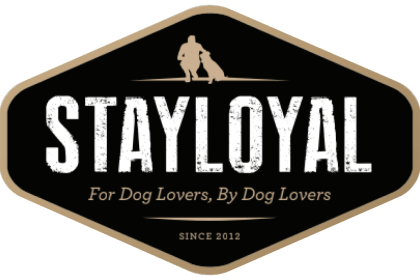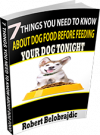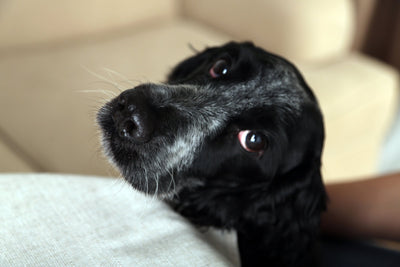Should My Dog Like the Taste of His Dog Food?

Your dog gets excited every night at 5:55 p.m. – she knows dinner is at 6:00 p.m. She may go to her dish, look at you, follow you around, some may even jump, bark and wag their tail. Their inner clocks don’t lie and their bellies are hungry. You feed her and she goes to her dish, excited as ever, but then doesn’t eat. Instead, she comes to the dinner table and gives you sad eyes as you feast on a steak. As a loving dog owner you naturally are concerned – does she not like the taste of her food?
Many dog food marketing companies would tell you yes, and then quickly mention that you need to switch their brand, buy their food topper or buy their cookbook to home make your dog’s meals.
But is any of this true? What does it mean for a dog to “like” their food and does it automatically mean it’s better for them?
Think of it this way – do you love vegetables? Or would you prefer to eat cake? Most of us would say the latter. Sugar and cream tastes much better to most than a carrot stick or cooked spinach. But which is better for you? The answer is obvious.
First, we should realize that taste is not as important as nutrition. Dogs are opportunistic creatures and will eat anything when they are hungry. Anything. So don’t think your dog will starve to death if he isn’t drooling over his dinner every night.
Second, we need to think about how companies make their dog food taste better. Dog food companies know pet owners will stop buying a product if their pet stops eating it, so they spend thousands on research, finding out which additives make dogs more likely to eat one kibble over the other. Sometimes, the additives are not that bad. For example, a study recently done by one dog food research company compared adding beef liver to food to see if it made dogs more likely to eat it compared to other additives. However, many taste additives are not natural or good for your dog.
“Palatants” are the industry word for these additives and they are often manufactured out of either artificial chemicals or natural ingredients that are not good for your dog. Sugar is a leading form of flavor additive that is often put in low-quality foods full of grains and fillers to make it taste better. It can be any form – from cane molasses to corn syrup or the frightening propylene glycol (which is also used to make antifreeze and is actually what make this hazard taste sweet to animals as well). Animal digest is another one you will see on ingredient labels. What animal are they using? You may not want to know. What is digest? You may not want know that either. It’s basically unspecified parts of unspecified animals – the leftovers from other industries that couldn’t be used and often are rancid or old. They cook it down into a jelly-like glob and stick it in your dog’s food because it adds a flavor and aroma dog’s like (remember, dog’s like rolling around in dead stuff and eating poop too).
SO THE BOTTOM LINE IS – JUST BECAUSE YOUR DOG LOVES EATING IT, DOESN’T MEAN IT’S GOOD FOR HIM.
How Overfeeding Plays A Role Here
I know we probably sound like a broken record about over-feeding, but this can affect your dog’s desire to eat. If you are feeding him too much, his instinct tells him he doesn’t need to eat, so he will turn up his nose at his balanced diet. Does that mean he won’t accept that piece of steak? Of course not,
because that has higher value to your dog. So, if your overweight dog stops eating his kibble, but you keep feeding him treats from the table, you are teaching your dog that if he holds out, something better comes along. Instead, stop with the side treats, cut back on his food, and he will start eating his balanced diet again. And, he will be healthier too!
Wary of Change
Another time when dogs may stop eating and owner’s immediately think the food must not taste good is when you are switching brands. Some dogs will gulp down anything without a thought. Others are suspicious of that new food that’s mixed in with the old. Especially if they have been on the same food since puppyhood. When that happens, don’t assume it’s because the new food is somehow bad. You can help by mixing the foods more slowly (so a higher ratio of old to new at first) and by adding something notorious such as bone broth in the beginning. Once your dog realizes the new food doesn’t make him sick, he won’t have a problem eating it.
So next time your best friend turns up her nose at her bowl, think about the situation. Have you been feeding to many treats? Did you recently change food quickly? Barring a medical issue (always a good thing to check if your dog suddenly stops eating!), it may be that you have been indulging her just a little too much and you need to cut back on the unhealthy treats so she can get her proper nutrition. Just like us, your dog needs to eat her “vegetables” (figuratively speaking). Her own balanced diet, including dry dog food, a few fresh veggies and meaty bones is the best way to do that.








